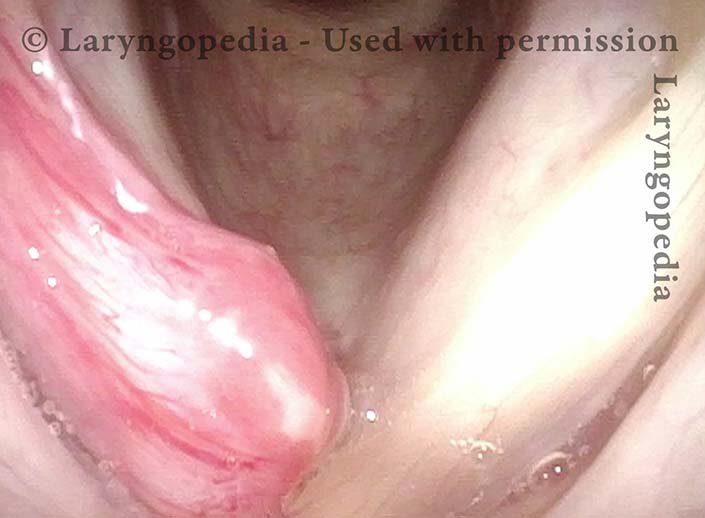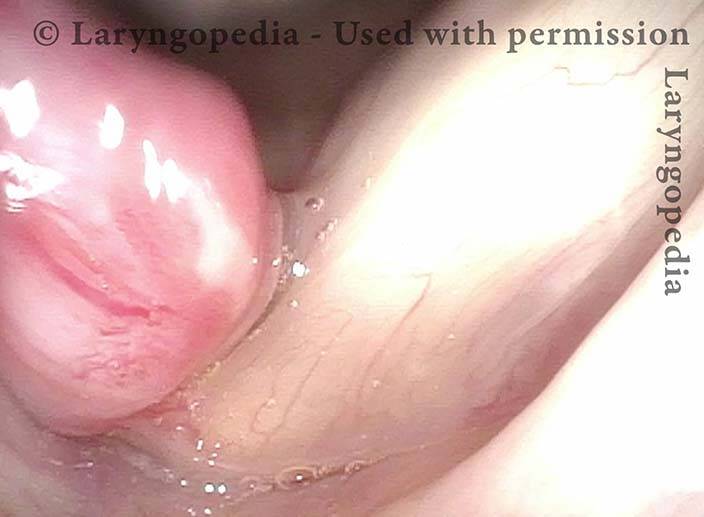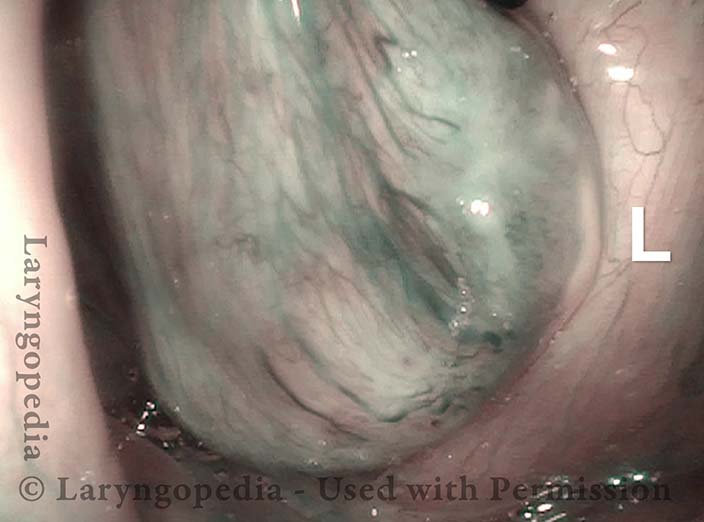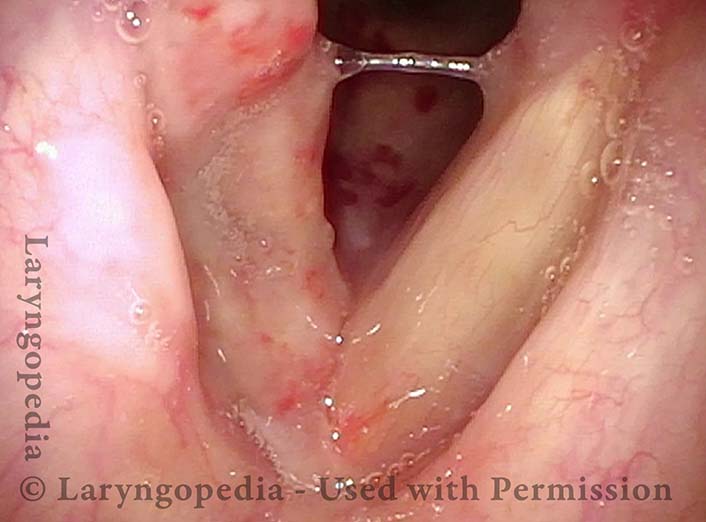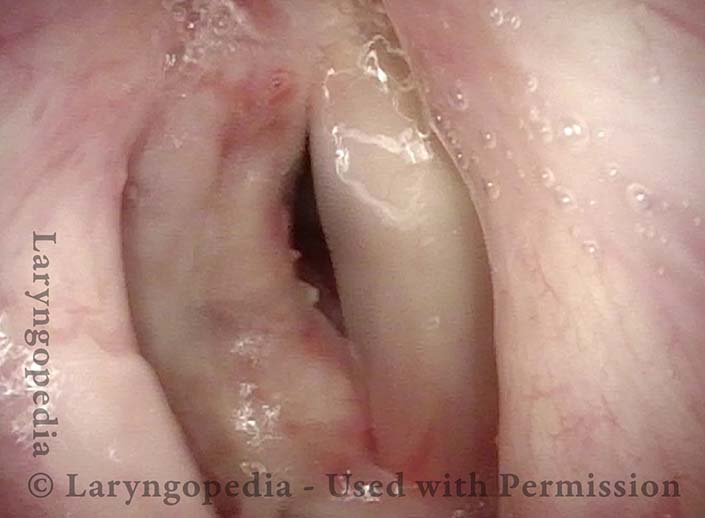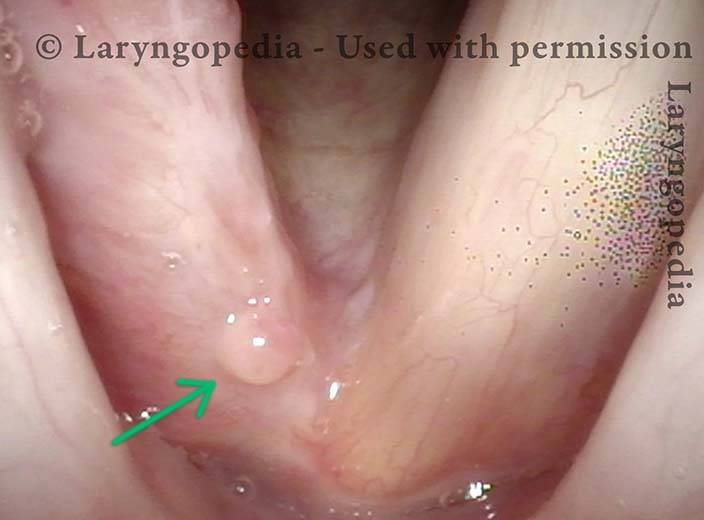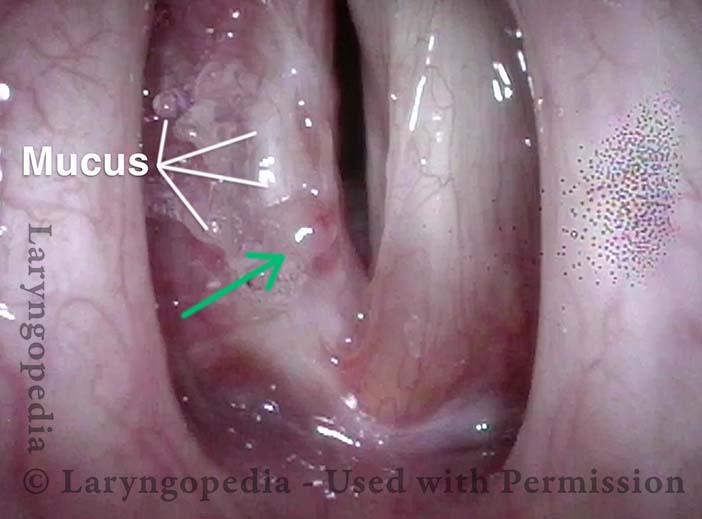Spindle Cell Carcinoma (Carcinosarcoma, Sarcomatoid Squamous Cell Cancer)
Spindle cell carcinoma is a rare variant of the much more common squamous cell cancer seen in the larynx. This tumor type represents approximately 1% of larynx cancers. As testimony to its rarity, one publication from the Mayo Clinic [1] suggests that it may be seen on average once a year at that institution. This entity has sometimes been called a “collision tumor” as though a tumor of mesoderm origin (sarcoma) has collided with a tumor of ectoderm (squamous cell) origin.
Treatment Options
Due to its rarity, treatment is not highly standardized, but it appears that complete surgical removal is key. Radiation is a consideration, not for primary treatment, for known or potential microscopic disease after surgical removal. Publications on this subject often describe the tumor as “polypoid,” as seen in the example below.
Photo Essay of Spindle Cell Carcinoma
This older man developed unexplained hoarseness. The original removal pathology result described only a “polyp.” Elsewhere, removal was complete, but recurrence is shown here that remarkably resembles the original tumor removed. Notice the mucosa-covered polypoid appearance though the tissue itself is very firm.
Tumor on Vocal Cord (R) (1 of 8)
Tumor on Vocal Cord (R) (1 of 8)
Tumor on Vocal Cord (R) (2 of 8)
Tumor on Vocal Cord (R) (2 of 8)
Anterior of tumor (3 of 8)
Anterior of tumor (3 of 8)
Capillaries over tumor (4 of 8)
Capillaries over tumor (4 of 8)
Tumor Removed (5 of 8)
Tumor Removed (5 of 8)
Functional but weak voice (6 of 8)
Functional but weak voice (6 of 8)
Granuloma or Tumor? (7 of 8)
Granuloma or Tumor? (7 of 8)
Cords match during phonation (8 of 8)
Cords match during phonation (8 of 8)
Share this article

